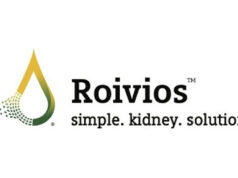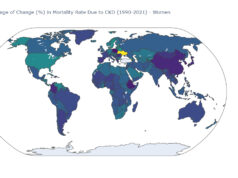
Sodium-glucose cotransporter-2 (SGLT2) inhibitors can be used safely to help preserve graft function in diabetic kidney transplant recipients, as per the findings from a retrospective cohort study published in the journal Transplantation.
The study’s authors, Jang-Hee Cho (Kyungpook National University, Daegu, South Korea), Jung Pyo Lee (Seoul National University Boramae Medical Center, Seoul, South Korea) and colleagues, begin their report by noting that kidney transplant recipients are exposed to both the graft rejection and nephrotoxicity of immunosuppressants. As such, “special attention” is required to select the optimal antidiabetic medication for long-term use.
They also state that SGLT2 inhibitors have previously demonstrated their efficacy and safety in diabetes patients with chronic kidney disease (CKD) through several landmark randomised controlled trials (RCTs). However, Cho, Lee et al add that no large-scale studies have been conducted to confirm these benefits and the safety of SGLT2 inhibitors in kidney transplant recipients. As such, they evaluated the impact of these medications—which are also sometimes referred to as ‘gliflozins’—in a multicentre cohort of kidney transplant patients with diabetes.
The researchers report that a total of 2,083 diabetic kidney transplant recipients were enrolled from six transplant centres in South Korea. Among them, 226 (10.8%) patients were prescribed SGLT2 inhibitors for more than 90 days. The primary outcome of the study was a composite outcome of all-cause mortality, death-censored graft failure (DCGF) and serum creatinine doubling. An acute dip in estimated glomerular filtration rate (eGFR) over 10% was surveyed after SGLT2 inhibitor use too.
During the mean follow-up of 62.9 months, the SGLT2 inhibitor group had a lower risk regarding the primary composite outcome versus the control group in both multivariate and propensity score-matched models (adjusted hazard ratio, 0.43; 95% confidence interval, 0.24–0.78; p=0.006 and adjusted hazard ratio, 0.45; 95% confidence interval, 0.24–0.85; p=0.013, respectively). Cho, Lee and colleagues also detail that multivariate analyses consistently showed a decreased risk of DCGF and serum creatinine doubling in the SGLT2 inhibitor group.
The overall eGFR remained stable without an initial dip after SGLT2 inhibitor use, the authors add. A minority (15.6%) of the SGLT2 inhibitor users showed an acute eGFR dip during the first month, but there was no significant long-term impact on the kidney function of these patients and their eGFR recovered thereafter—a finding that is consistent with prior research. Risk factors identified by the authors for the eGFR dip were time from transplantation to SGLT2 inhibitor usage and mean tacrolimus trough level.
“In conclusion, this study has demonstrated that SGLT2 inhibitors have renoprotective effects and can be used safely in kidney transplant recipients with diabetes,” Cho, Lee et al write. “Overall, the kidney transplant recipients administered with SGLT2 inhibitors showed an improvement in a composite of all-cause mortality, DCGF, or serum creatinine doubling, compared with the control group.”
The researchers also conclude that a prolonged, prospective randomised trial is now warranted, and will be needed to confirm and evaluate the potentially beneficial effect of SGLT2 inhibitors on preserving graft function in diabetic kidney transplant patients.












